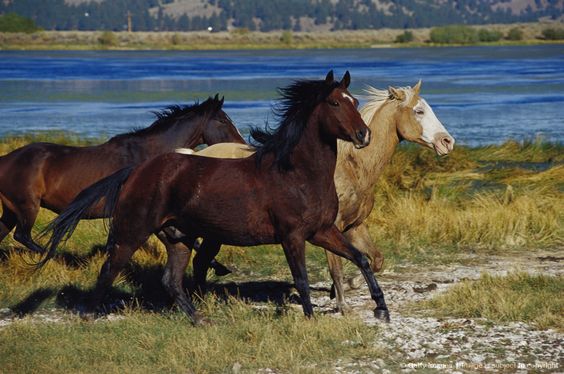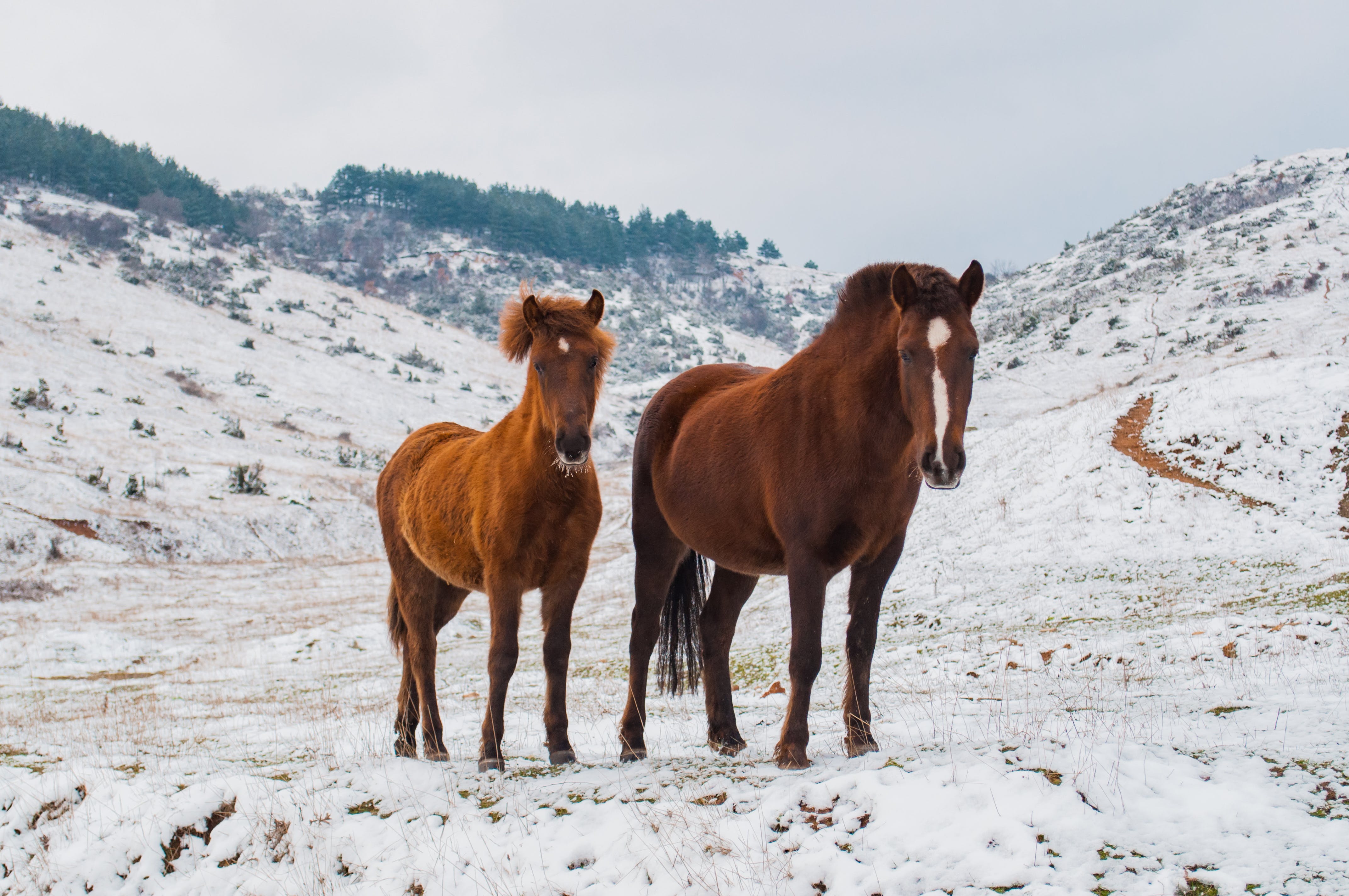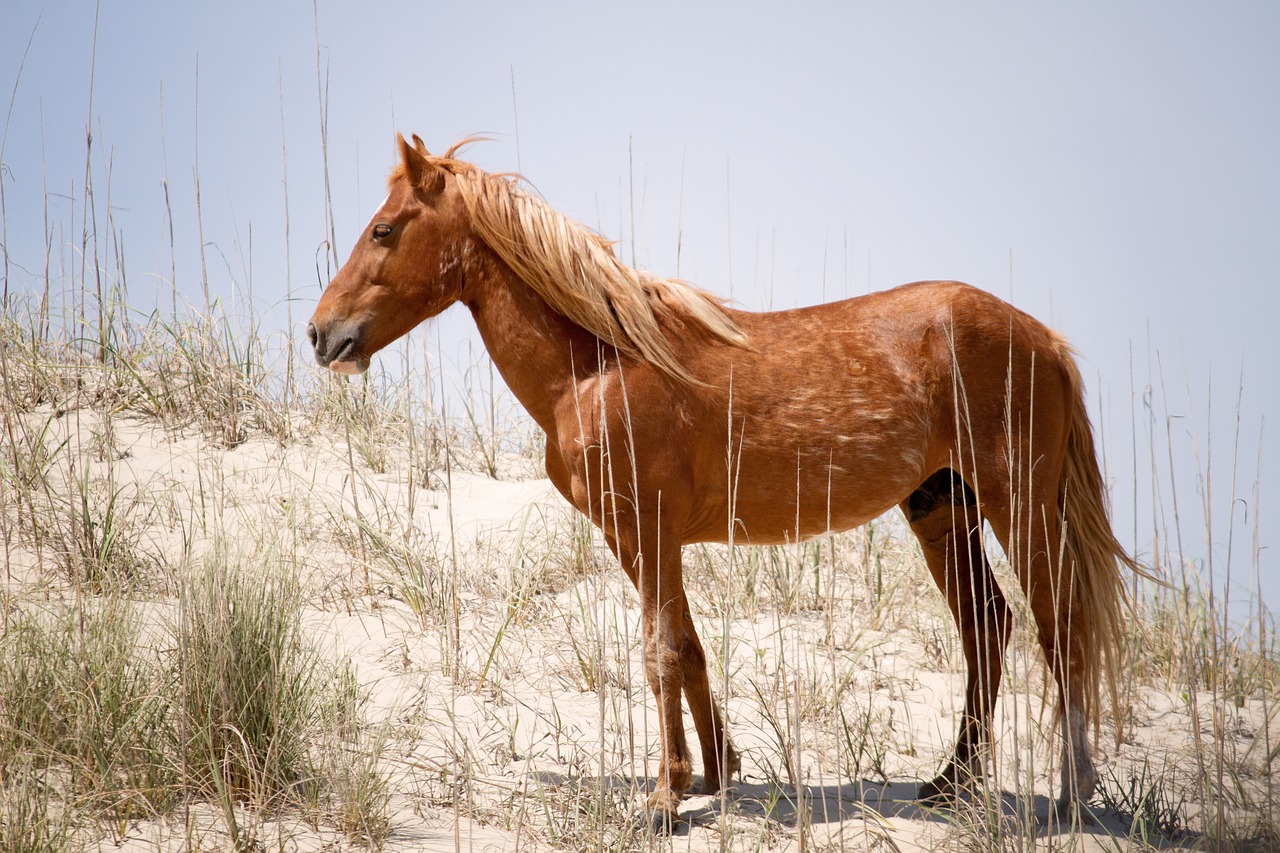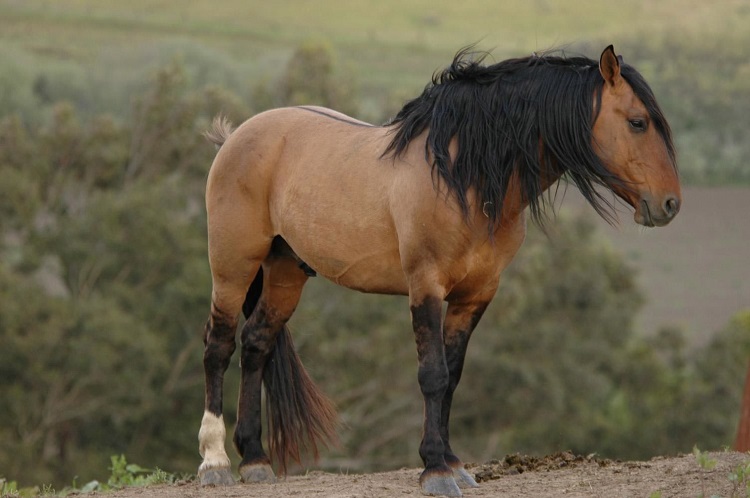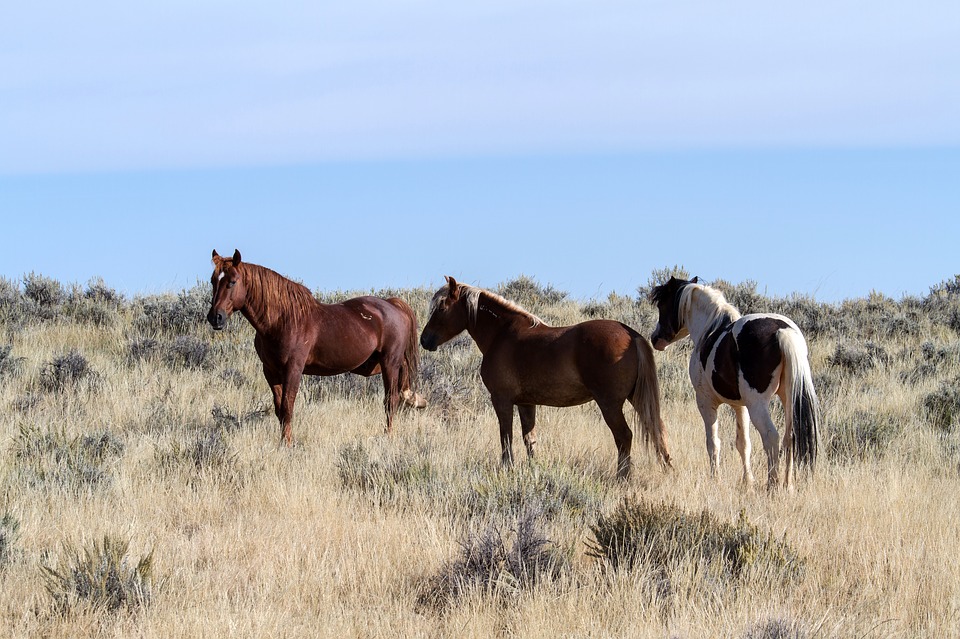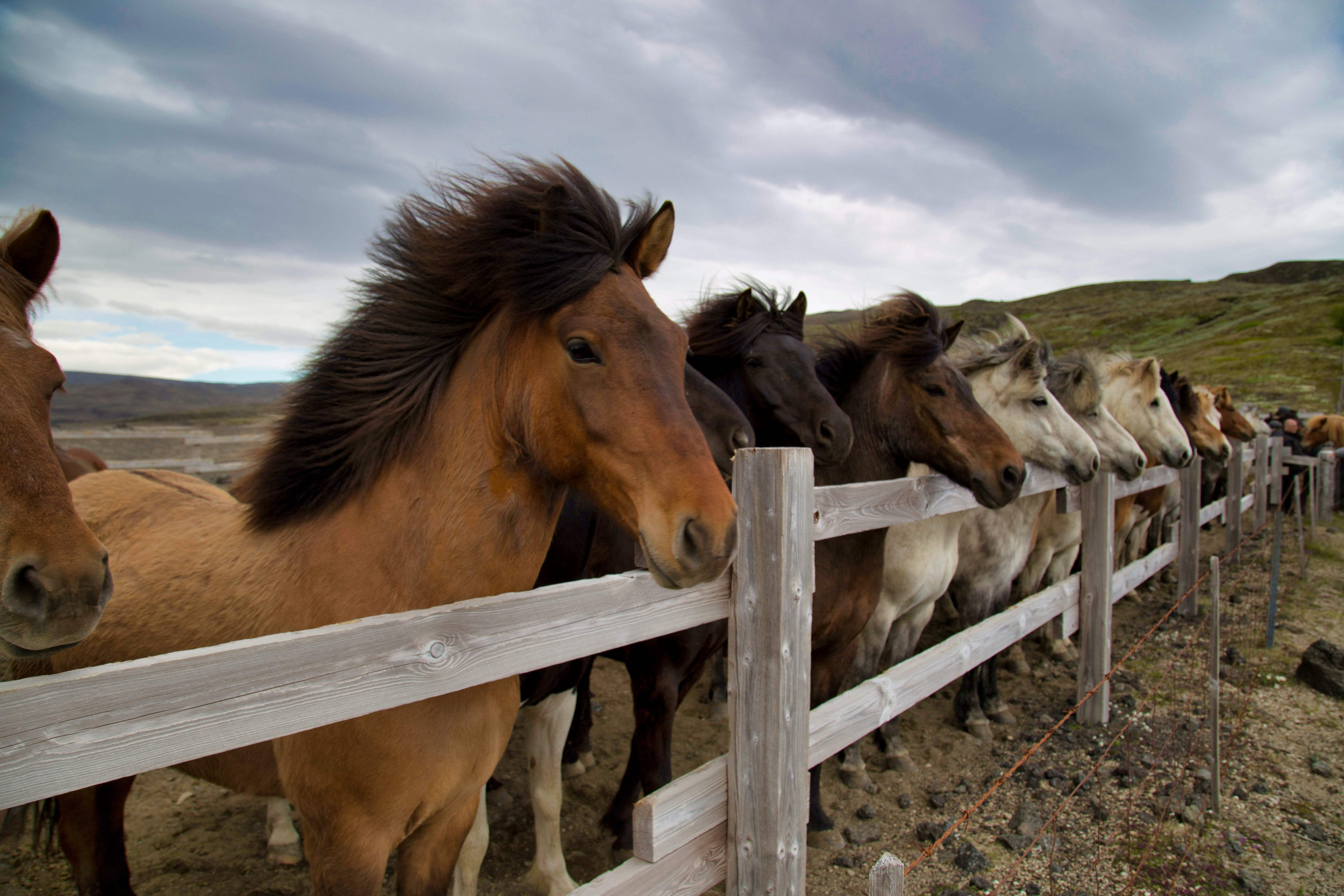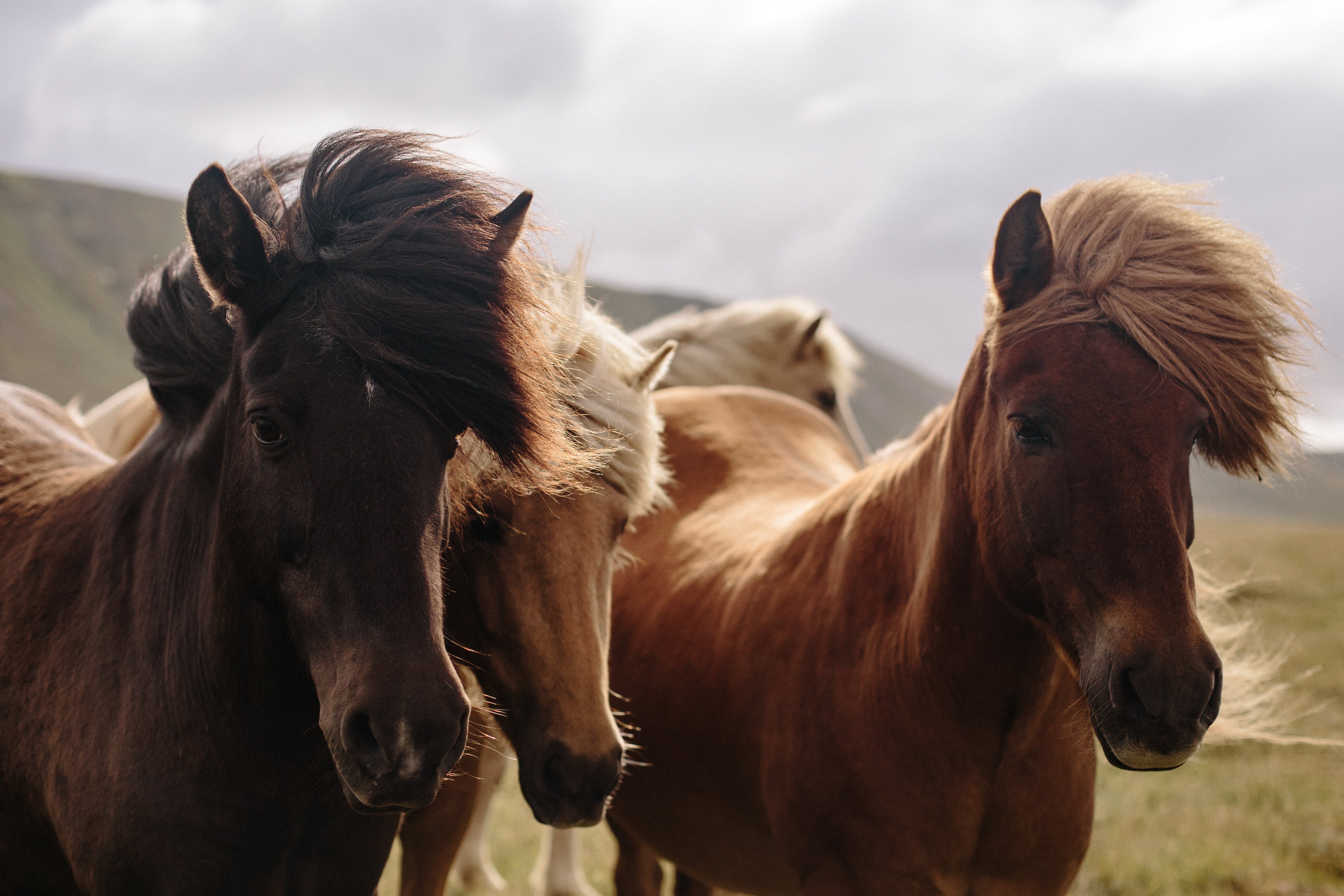- Best Horse Grooming Kits & How to Choose Them - June 30, 2022
- Best Winter Riding Boots & Useful Tips on Choosing the Right Pair for You - June 30, 2022
- Mustang Horse Guide: Facts, Trainability, Temperament & More - June 30, 2022
- Mustang Quick Facts
- Mustang Horses Overview
- How to Identify Mustang Horses
- Mustang Horses Lifespan
- Mustang Horses Appearance and Varieties
- Mustang Horses Human Interactions and Training
- How to Take Care of Mustang Horses
- Mustang Horses Diet
- Breeding Mustang Horses
- Mustang Horses Cost
- Where to Buy Mustang Horses
- Famous Mustang Horses
- FAQs
- Mustang Horse Guide - In Conclusion
I will tell you all you need to know about Mustang horses in today’s mustang horse guide. I have loved horses since I first went to horseback riding classes over eight years ago. Back then, I mainly created connections with local horse breeds.
Even now, I remember with amusement how difficult it was for me to ride an Arabian horse for the first time. It was a female horse, and she led me wherever she wanted instead of me controlling her.
Coming back to our current topic, you should know that Mustangs have a rich history and are protected animals. Mustangs horses are wild and hard to tame, but you could adopt one if you’re willing to put the time, money, and effort into proper training.
Like many other horses of the Equiade family, Mustangs are free in spirit. They’re one of my favorite horse breeds after Friesian and Andalusian horses.
Mustang Quick Facts
I would love to own a Mustang, but I’m sure I would need help training and taming it. Mustangs are surefooted and intelligent. They’re also hardy, and you can adopt one if you want. But on the other hand, these bulky horses are smaller than other breeds. So, they might not suit a taller rider. Also, feral Mustangs that lived in the mountains most of their lives require a lot of training and firm handling.
Here are some quick facts you should know about Mustang horses:
- Horse family – Equidae;
- Horse breed – Mustang;
- Common names and types – Mustang, Spanish Mustang, Colonial Spanish Mustang;
- Common nicknames for Mustang horses – Blanca, Chico, Hidalgo, Flame, etc.;
- Country of origin – North America (Mustangs were initially bred in Spain by the conquistadors);
- Breed origin – Spain;
- Height – between 52 and 60 inches;
- Weight – around 800 pounds;
- Color – standard colors: black, chestnut, and bay; more unusual colors: white, roan, spotted, pinto;
- Coat quality – thick yet short, to protect these horses from harsh mountain winters;
- Body hair – a mix of both feathered and lush – during winter, their coat grows longer, while in the summer, they shed a lot of that hair;
- Temperament – smart and headstrong, but it also varies based on the animal’s background and the way it’s raised;
- Lifespan – between 25 and 30 years, with some of them reaching the age of 40;
- Purpose – trail and working horses.
Mustang Horses Overview
Mustang horses are wild since they roam freely across numerous areas of the US’s western part. These beautiful and majestic creatures descend from the Spanish horses owned by the conquistadors. They came on ships from Spain to America, where some of these horses escaped and started to live freely in the wilderness.
Once a domestic animal, the Mustang horse is now perceived as feral. So, they’re neither wild nor domesticated. I would say they’re something in between. No organization controls domestic breedings when it comes to Mustangs. However, specific associations allow adoption.
Mustang’s ancestors were brought to the Americas by Spanish conquistadors in the 15th century. Some of those original horses that were domesticated at first were either released into the wild or managed to escape. Their descendants are nowadays known as Mustang horses. They’re surefooted and resistant to nature’s elements.
The issue of the Mustangs has been quite controversial since many ranch owners complained over the years about these feral animals. Still, in 1971, the federal government released an act that protected free-roaming horses such as Mustangs.
How to Identify Mustang Horses
I’ve seen and rode many beautiful horses, but none of them were as impressive as the Mustangs. Well, perhaps there’s one exception since I consider Friesians the most majestic horses of all. But, if you haven’t seen a Mustang in real life, let me tell you some details about it.
Mustangs are pretty similar to smaller Warmblood-type horses. Moreover, they have strong muscular bodies and narrow yet well-defined chests. Most Mustang horses feature rounded hindquarters and short backs. In terms of height, a Mustang measures between 52 and 60 inches (13-15 hands, where one hand equals four inches).
A Mustang’s legs are considerably larger than many other horse breeds. They developed that way because of the animals’ lifestyle, with decades spent outdoors, dealing with rough terrain and harsh roaming. I particularly love the shape of a Mustang’s head due to its intelligent brown eyes. The eyes are spaced wide, but the eye color can vary based on the horse’s coat color.
So, although most Mustangs have brown eyes, some are born with green, blue, or grey eyes. Another thing I’ve noticed about these lovely horses’ eyes is their shape which can resemble almonds or be slanted.
Finally, Mustangs can feature stunning and rather curious combinations when it comes to coat colors. Those with a solid coat color are gray, black, palomino, bay, chestnut, or brown. Other Mustang horses have different spots or patterns, such as the tobiano and overo ones.
If you’re ever watched a classic old-school western movie, I bet you’ve also seen at least one Mustang horse being used in that film.
Mustang Horses Lifespan
The lifespan of a Mustang horse is impressive. I was amazed that these animals could live up to 40 years in the wilderness. So, they’re resistant and long-livers. If they’re domesticated and raised in captivity, Mustang horses have a lifespan between 25 and 30 years which is also pretty impressive.
With that lifespan, Mustangs tend to outlive many other horse breeds. These feral horses are well-protected, so they don’t become extinct. For that reason, around 50,000 Mustangs live and roam free all over the western part of the US. Most of them live in sanctuaries, natural reservations, or on private land.
I was surprised to find out that Mustangs live up to 40 years old since I know that within each Mustang herd, there are frequent battles between stronger and younger horses for the title of the mare. These constant fights are stressful for the horses. However, senior horses, young males, and weaker specimens don’t enter these competitions.
But then, I also found out that they rarely fight to the death, even though serious injuries can lead to death on occasions. So, if a Mustang, especially an adopted one, is properly groomed and taken care of, it will live a long and healthy life. Moreover, it will be able to participate in various competitions like barrel racing, show jumpings, reining, and endurance shows.
Mustang Horses Appearance and Varieties
There are several Mustang types, but many horses have a stocky and bulky appearance. This is because they’re smaller than other horse breeds. It isn’t easy to place all Mustang horses in one description or category since they come in various colors, sizes, and varieties. For instance, some are larger and more athletic, whereas others have bulky and smaller bodies.
All these combinations might be intriguing at first. But, I should tell you that nowadays, Mustangs aren’t purebred since they’ve had influences from other horse breeds over the years.
Mustang Horses Main Types
In the US, you’ll find over seven Mustang horse types, and I’ve detailed them below.
a. Kiger Mustang

The influence of the rebellious Spanish origin is easily seen in the Kiger Mustangs. In the US, they lived originally around Oregon, from where they spread across the western region. You can easily recognize a Kiger horse by its dorsal stripes and dun coat colors. Still, there are exceptions, too, and some Kiger Mustang horses could feature different colors.
Here’s what you should remember in terms of the main characteristics of the Kiger horses: their bodies are compact, their necks are well-crested, and they have classic Barb heads. I think I would like to meet a Kiger Mustang due to its friendly personality and its athletic build.
b. Spanish Mustang
These are also direct descendants of the original Spanish horses from Europe. Spanish Mustangs are larger than other horses of the same breed. I am sad to say that, even though there were numerous Spanish Mustangs in the United States, since the beginning of the 20th century, the number of herds started to decrease significantly.
But let’s look at the bright side. They’re currently raised and protected in several specialized places. The initiative was taken by concerned experts and people who simply love horses (I’m certainly one of those people). The smooth and muscular body of Spanish Mustangs features short backs, a wide range of coat colors, and well-defined necks.
c. Pryor Mountain Mustang
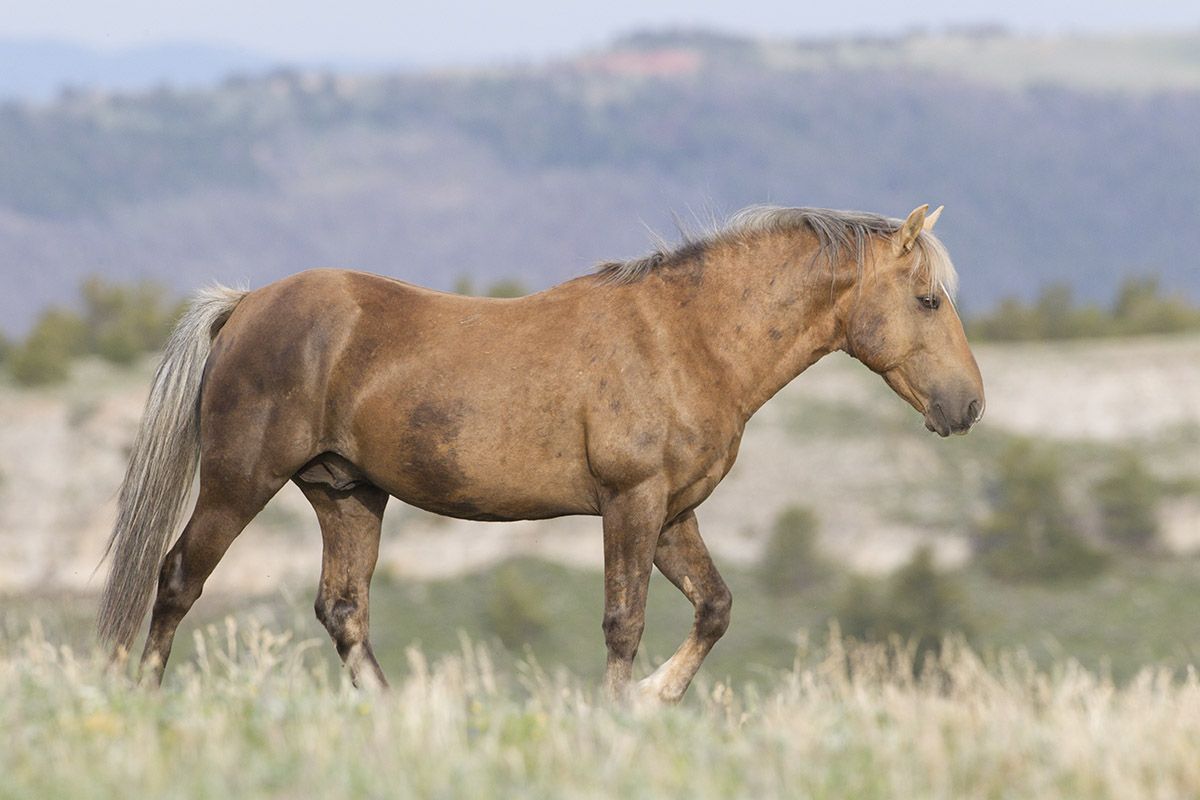
These Mustangs live mainly in Montana, in the mountain areas. Many equestrians consider these Mustangs the purest type of all. Their body structure is very similar to the one Spanish horses had in the 1500s when they brought them to the US. In Montana, it’s believed that Pryor Mustangs have been living in the wilderness since the beginning of the 1700s.
Many of these Mustangs have primitive body markings, but they come in many colors, including black, palomino, buckskin, and others. I love how strong and muscular the build of these horses is. Frequently, they feature Roman noses and longer tails.
d. Chincoteague Pony
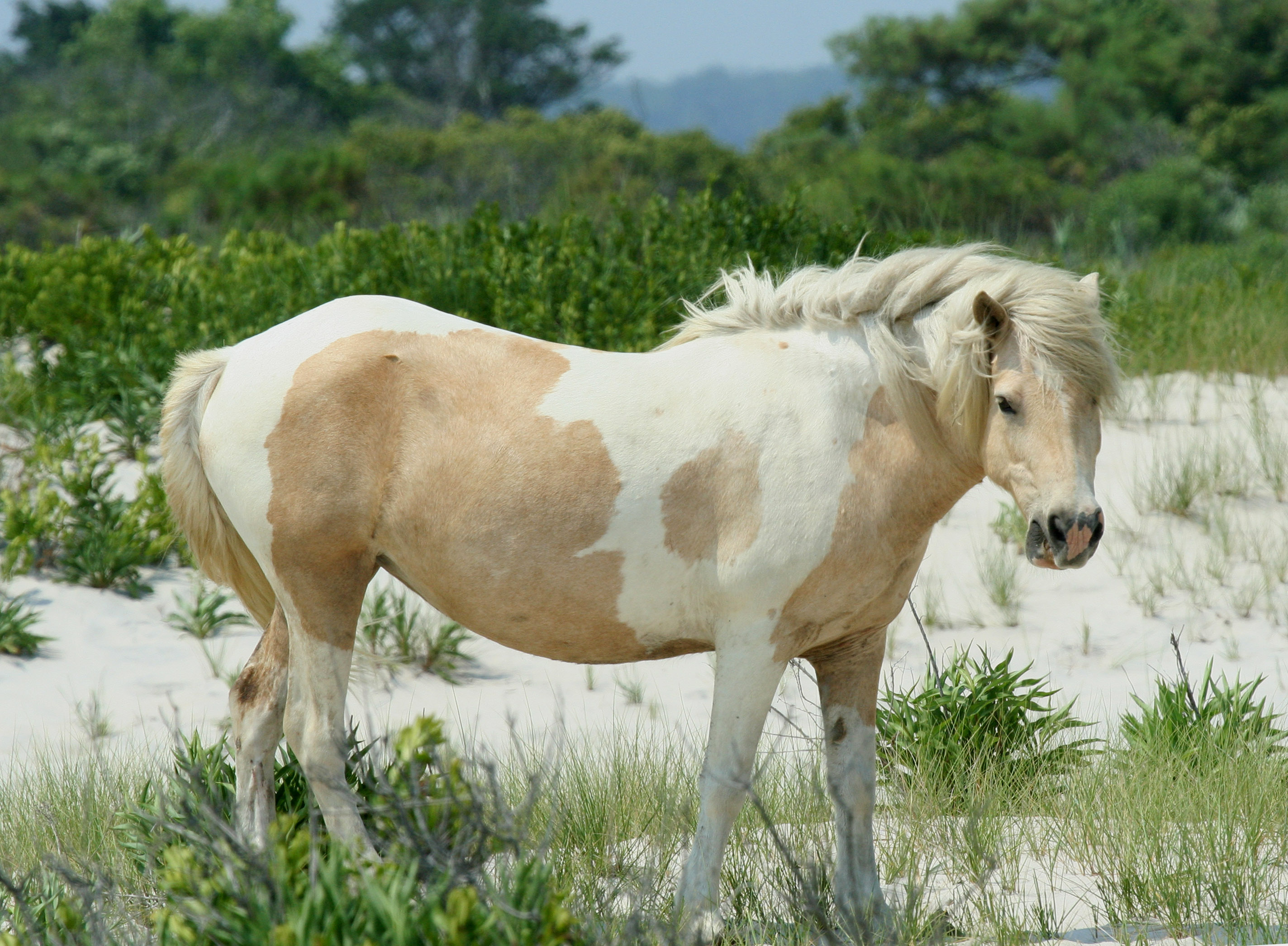
These tiny Mustang horses live mainly on the Chincoteague island, and, just like their fellow island Mustangs that can be seen on other islands on the west coast, these are pretty special since they can adjust to their environment’s unique characteristics. Don’t be fooled by their small size because these adorable yet feral horses are pretty hardy.
I like them, but I think their big bellies are pretty funny since they look like they’re always bloated. There’s a good reason behind their appearance: Chincoteague ponies consume much water, much more than a regular horse would drink.
e. Abstang Mustangs
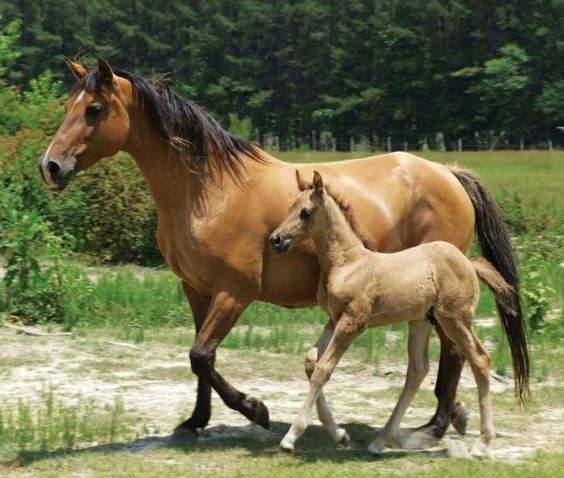
Wow, I was so surprised to recognize the shape of the classic Arabian horse when I first saw a photo of the Abstang Mustangs. Of course, that’s because they are a mix-breed of Arabian and Mustang horses. This takes me back, and I now reminisce about the time when I rode a temperamental Arabian horse that wasn’t used to following the rules or training commands.
But enough about my previous riding experiences; Abstang horses have high tails that they display proudly. That, combined with their concave profile, makes you think that these horses are naturally arrogant. And, let me tell you that you’re not wrong. Just like Arabian horses, these also have arched necks and narrow muzzles.
f. Cerbat Mustang
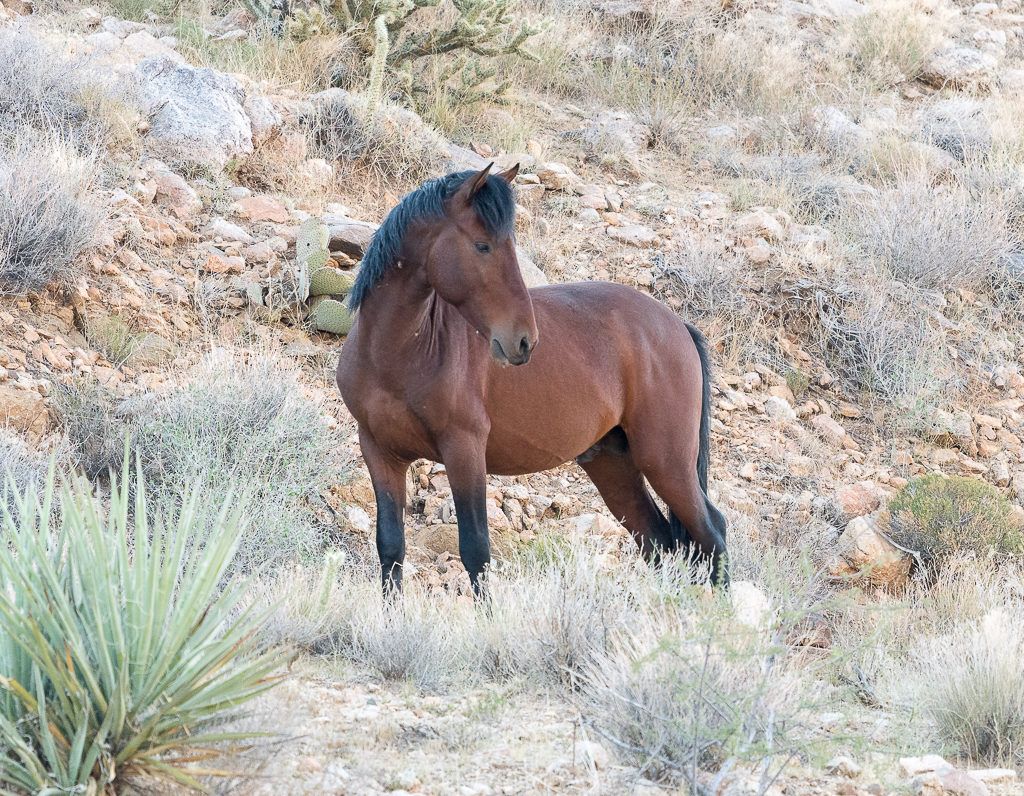
Most Cerbat horses feature white legs, while their coat is either bay or chestnut. These horses are bigger than their ancestors. Cerbat Mustangs are easily recognized because of their ambling gate. Although Mustangs are known as feral animals, I was happy to find out that Cerbats have a relatively quiet and calm temperament.
Another interesting fact that I believe you should know is that young Cerbats are born with darker coats, but their hair becomes lighter as they grow and age. So of all the Mustang horse types, these are a bit easier to train.
g. Colonial Spanish Mustang
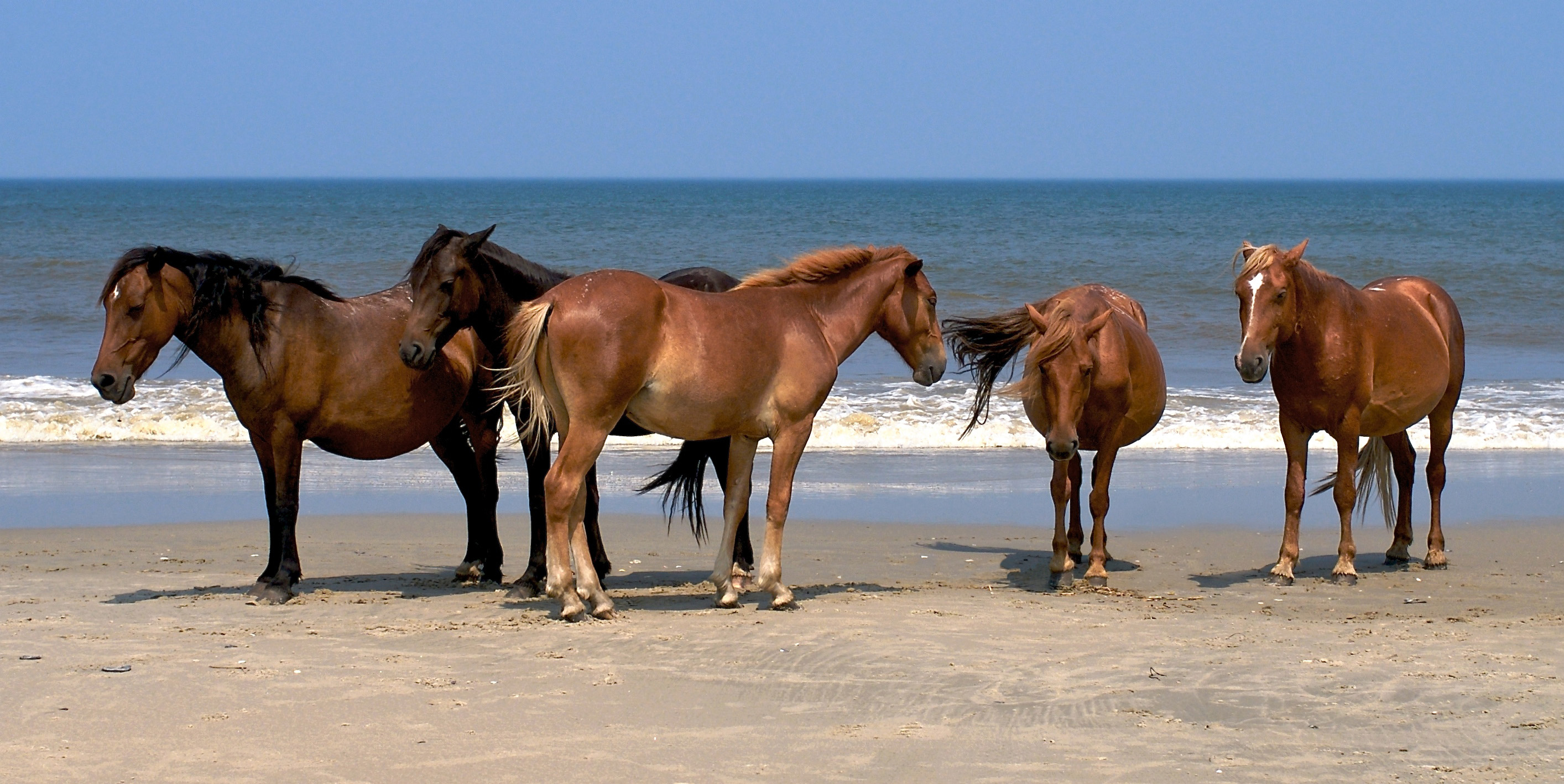
This breed is considered the one from which nowadays Mustangs originated. All the other Mustang types developed from the Colonial Spanish Mustangs. Only the strongest horses survived after being shipped from Spain to the US. Many horses were abandoned or left behind once the Spanish conquerors returned home to Europe.
Colonial Mustangs are North Carolina’s official state horse.
h. Coyote Canyon Mustangs
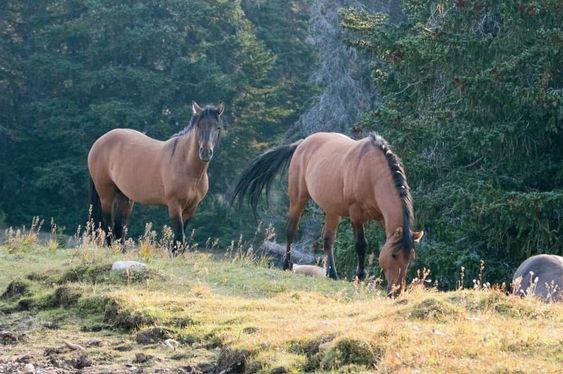
There are only a few of these types of Mustangs living in the west part of the US today. In 2003, when a herd of Coyote Canyon horses was moved, only four survived the relocation, and they are now living in Warner Springs Valley at a private ranch. Unlike other Mustangs, these are more refined. Moreover, they have dun or chestnut coats, and their body is smaller than other Mustang types.
i. Island Mustangs
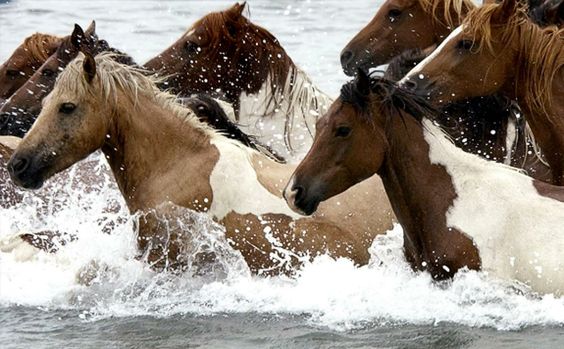
These are the strongest and most resistant swimmers of all Mustangs since they live on islands such as Shackleford and Assateague. They’re pinto horses that are protected by the islands’ authorities. According to the legend, these Mustang horses arrived on these islands after a shipwreck occurred.
j. Sulphur Springs Mustangs
I know what you must think; you might expect me to continue to say that these Mustang types also have solid Spanish genes. But, get this: despite their Spanish physical and personality traits that remain unaltered, these horses didn’t have a choice but to adapt to their natural environment.
It was easy for me to notice the element that makes these horses stand out from other types of Mustangs. For starters, their legs have darker stripes. Secondly, they live mainly in Utah, more specifically on the Needle Mountain.
Mustang Horses Human Interactions and Training
Mustang horses might be a bit wild, but they’re still trainable. Despite their free and impetuous temperament, a good and experienced horse trainer will be able to tame them and transform these horses into lovely and obedient companions. Still, you must expect training that lasts a long time, and that’s consistent and firm.
I’m quite afraid of wild horses that are untamed or strong-tempered. So, if I were to adopt a Mustang, I would surely hire an expert. You’ll need the firm hand of a good trainer, primarily because Mustangs are known for their stubborn streaks. They can act rebellious at first, so they need to know that the trainer is in charge right from the start. Otherwise, they might become feisty.
Moreover, younger Mustang horses are much easier to tame and train than seniors. You must be gentle yet firm to gain your horse’s trust. Once you accomplish that, you’ll quickly develop a deep and long-lasting relationship with your now loyal and affectionate horse.
While I am unsure if I would have the courage to ride a Mustang, I would enjoy observing it in its natural habitat.
Personality
It’s hard to say how Mustangs are since they each have a unique personality. So, having individual personality traits means interacting with several different Mustangs could lead to various experiences. For example, one could be more rebellious, while another might be calm and friendly.
Once I explored their world in more detail, I knew where most of these horses get their dominant side from. They are feral, which means they live in the wilderness in herds. Each herd has a stallion with a very dominant personality. So, a Mustang might surprise you with its gentleness towards people and its strong dominance over other horses. That’s also known as the herd mentality, which contains an Alpha male.
Although there were cases when wild horses attacked people, these situations were infrequent. Being prey animals makes Mustangs develop a powerful instinct of protection and preservation. That’s why they mainly flee when they sense danger.
At the same time, I would be careful if I were to meet a Mustang because some of them can be pretty spooky and reactive, especially those separated from the herd and stallions.
Trainability
If you plan to train a feral Mustang horse, you should remain calm and patient yet firm. Give your horse time to know and trust you. Once that bond is created, the horse will become more peaceful, and, in time, with adequate training, it will even be well-mannered.
For starters, I would get closer each time and gently touch them on the neck where they could see you without considering you a dangerous element. Then, rub their neck softly, just like you would do with any other horse breed. But first, you should find a way to catch the horse. Or, you could adopt one.
Once you take the horse to your ranch or facility, groom it, and start gaining its trust, the Mustang will behave like any other domesticated horse. During training, you’ll notice that the horse becomes tame and calm. That means it’s ready to be involved in riding or driving activities.
I am aware of all the effort and hard work involved in a Mustang’s training but believe me when I say that seeing its progress and enrolling it in competitions are highly rewarding and satisfying. After initiating a bond with your horse, you should attempt to place the halter on. If this is your first time doing that, I strongly suggest you hire an expert or only try that in the presence of an experienced horse trainer.
Another way to start training your Mustang, if you don’t dare to go close to it and touch it with your hand, is with the help of a bamboo stick or pole. You could keep your distance for the first couple of days and only touch the horse with the pole. Touching a Mustang in another place other than its neck might lead to defensive reactions on its part. So, act with caution!
In the end, not only will your horse become accustomed to your presence, but it will even seek your affection.
How to Take Care of Mustang Horses
Taking care of a Mustang isn’t very hard since it’s a resistant horse used to harsh weather conditions. You’re not obliged to get them vaccinated, but you should at least check them for intestinal worms a couple of times per year. However, there are certain things you should know when taking care of Mustang horses:
- Mustangs need tall and wide living facilities since they were used to open areas;
- You might need to build a durable and tall fence that can resist a Mustang’s power – a strong barrier will prevent your feral horse from becoming a wild animal once again;
- If you adopt a Mustang, you need to be there for it every single day – they need frequent face and bonding time; otherwise, it will be impossible to make the horse trust you and follow your commands;
- Feed your Mustang the right kind of food – I know for a fact that Mustangs don’t consume grains. Instead, they love hay, grass, and forage;
- Find a skilled and experienced horse trainer – the right trainer could also provide you with your necessary support network via local ranches or barns and Facebook groups;
- Inform yourself to gather all the know-how before training your Mustang – if you’ve never owned a horse before, perhaps you should think twice before adopting a Mustang. But, on the other hand, if you want to own this horse breed, you should prepare and inform yourself first.
As I said, you don’t need to vaccinate your horse, although I would do that too, just as a precautionary measure. Finally, feed your horse with high-quality pasture plants and take it to the vet from time to time. I would definitely follow all these rules by the book if I had the honor and pleasure of owning a Mustang.
Mustang Horses Diet
In their natural habitat, Mustang horses usually consume grass and shrubs. However, they prefer harvested hay or pasture plants when adopted and raised in captivity. To remain healthy, they need to eat around 2% of their weight in pasture per day.
Let me tell you how you can prevent your Mustang horse from becoming obese. First, avoid letting it wondering freely on planted pastures. If that happens, the horse, which is an opportunistic eater, will eat and eat more than it actually needs to. Also, I would always provide my Mustang with fresh water since it can consume around 15 gallons of water per day.
Adult Mustangs eat between five and six pounds of pasture food each day. Free-roaming horses drink fresh water from lakes, springs, and streams. So, they used to drink mineral water a lot. Therefore, you should place a mineral block that’s rich in salt in their water.
Breeding Mustang Horses
Mustangs breed freely in the wilderness, which has become an issue of overpopulation. Hence, for the time being, there aren’t any active breeding programs in use (believe me, I’ve double-checked). However, being so versatile, Mustangs are excellent horses for duties such as ranch projects and work, trail riding, and dressage.
In fact, because of the crossbreeding situation that happened while they were roaming freely, not many horse owners have the courage to breed Mustangs. In their opinion, that’s simply not worth it because you never know what you’ll get in terms of genetics and traits.
Here’s what’s really going on: while the specialized authorities do health screenings on Mustang horses regularly, they don’t include pregnancy tests in that set of health analyses. So, those who choose to adopt mare Mustangs should be warned about future potential risks.
Mustang Horses Cost
The price varies a lot based on the horse, its age, personality and physical traits, and other factors. Buying a Mustang horse can cost as low as $130 or as high as $5,000. If you choose to adopt a Mustang horse, the price will be lower-around $100. The tamest and well-trained ones cost more, while untrained horses are much more affordable.
The BLM authority helps those who adopt Mustangs with $1,000 for their future training. Honestly, I’m pleased to know how straightforward the system functions. But, if your mind is set on buying a Mustang, yet your budget isn’t too generous, there’s always the option of paying for it in installments.
Other factors that influence the price of a Mustang are its bloodline and breeding. Awarded stallions are the most expensive ones.
Where to Buy Mustang Horses
There are several reliable online platforms where you can purchase a Mustang. It’s always a great idea to do your research and figure out whether or not the buyer is trustworthy so that the horse you’ll get is the way they say it is. Sites like Equine Now, Dream Horse, and Equine.com are reputable options.
For adoptions, you might want to consult the BLM website.
Famous Mustang Horses
Over the years, several Mustangs became famous. The most famous Mustang horses are Cobra and Hwin. The first one is the 2015 champion of the Freestyle Western Dressage competition, which is a popular international contest. The second horse is the animal, after which Breyer created its mode horse. Hwin also competed in the Mustang Magic Makeover show back in 2015.
Other famous Mustang horses are:
- Picasso – this horse used to have its own mare herd, and it still lives freely in Colorado;
- Hidalgo – one of the best Mustang horses to ever compete in international dressage contests. This horse appeared in a movie about Frank Hopkins in 2004;
- Spirit – this is a fictional Mustang that came to life in the DreamWorks studios, and soon after its creation, it became a popular animated cartoon.
FAQs
Answer: Mustangs aren’t suitable for you if you’re a beginner. If you’re an experienced rider, then yes, a Mustang could be a great choice. That’s because these horses have a wilder temperament, but they can be trained and gentle.
Answer: Mustangs are bulky and shorter than other horse breeds. They’re free-roamers and pretty hard to train. At the same time, these horses can become loyal companions due to their intelligence.
Answer: Yes, you can train and tame a Mustang, but you should expect some difficulties. Also, you must have a lot of patience since training wild Mustangs will take longer than taming other domesticated horse breeds. Free-roaming Mustangs aren’t used to being around people and don’t follow commands that easily.
Mustang Horse Guide – In Conclusion
Mustang horses are lovely and easy to keep and maintain once they’re tamed or trained. I like the fact that you don’t need to groom them all the time. Moreover, they can safely and comfortably live outdoors. These horses eat mostly hay or grass, and most of them aren’t required to get vaccinated.
I love Mustangs horses with all their rich history. I like a horse that’s not high-maintenance. These majestic horses have extraordinary personalities shaped by decades of harsh living conditions. Simply put, Mustangs are true survivors. In conclusion, they’re not a suitable choice if you’re a first-time horse owner.
But, if you’re an experienced horse trainer or owner willing to commit and dedicate a lot of time to raising and training these horses, then, by all means, adopt a Mustang. You won’t regret it! Or, if you want to buy one, search for a reputable seller.


